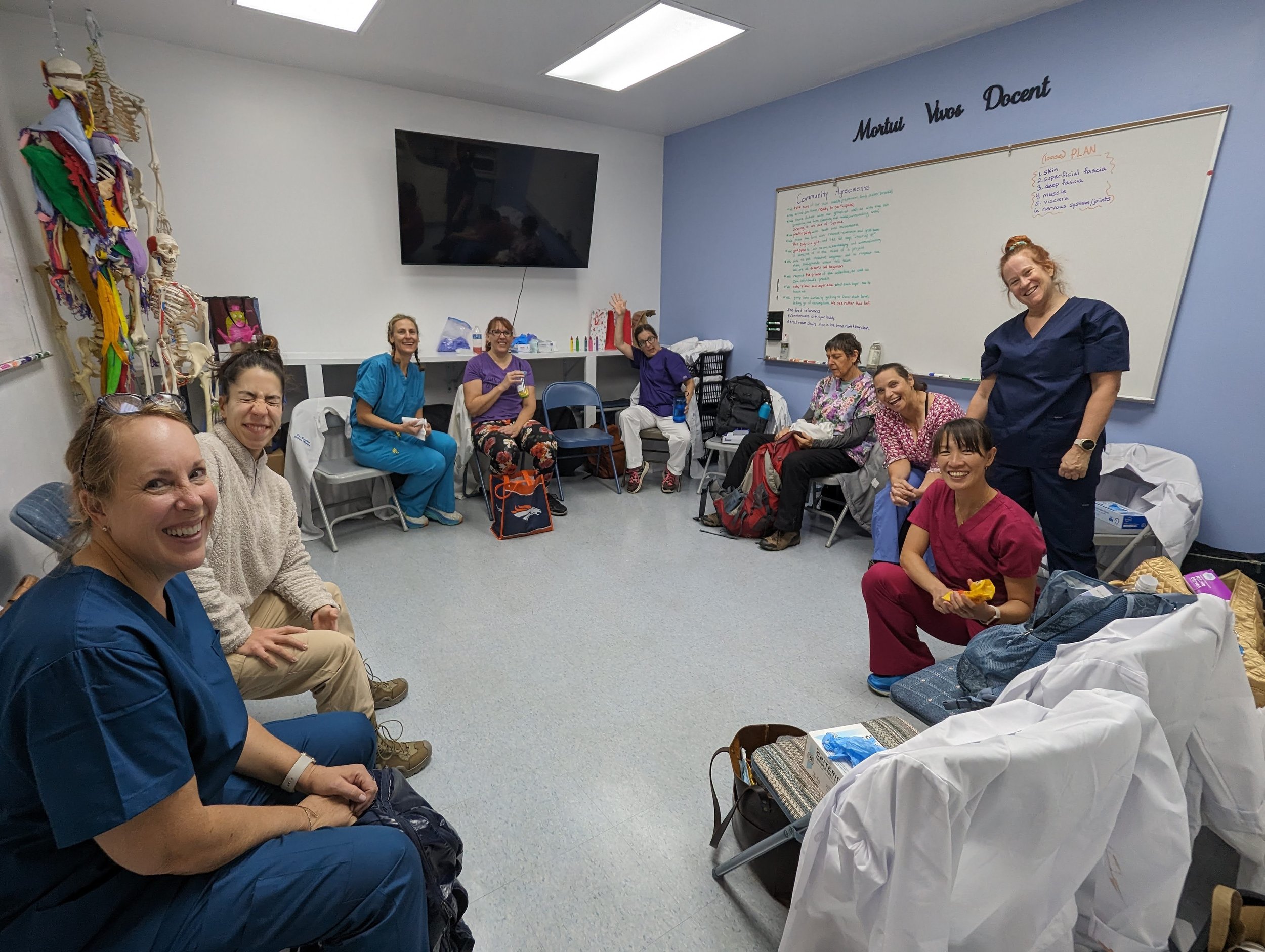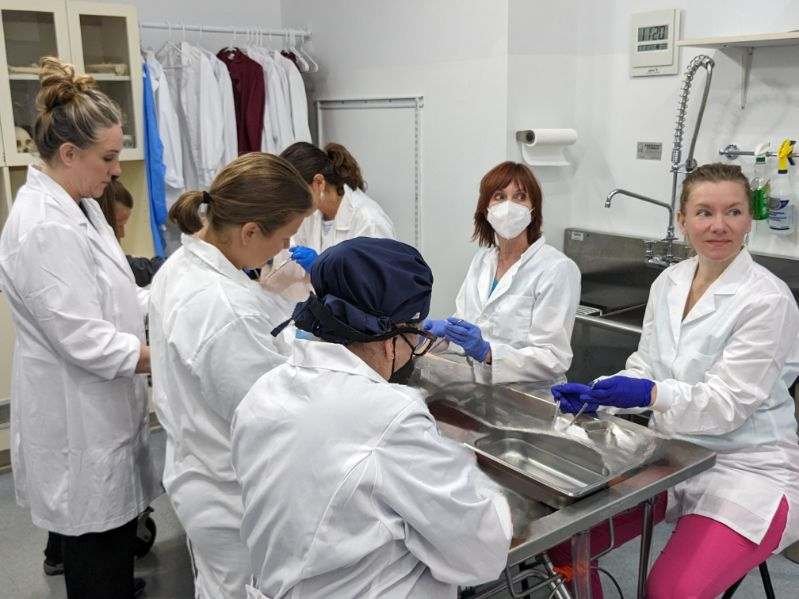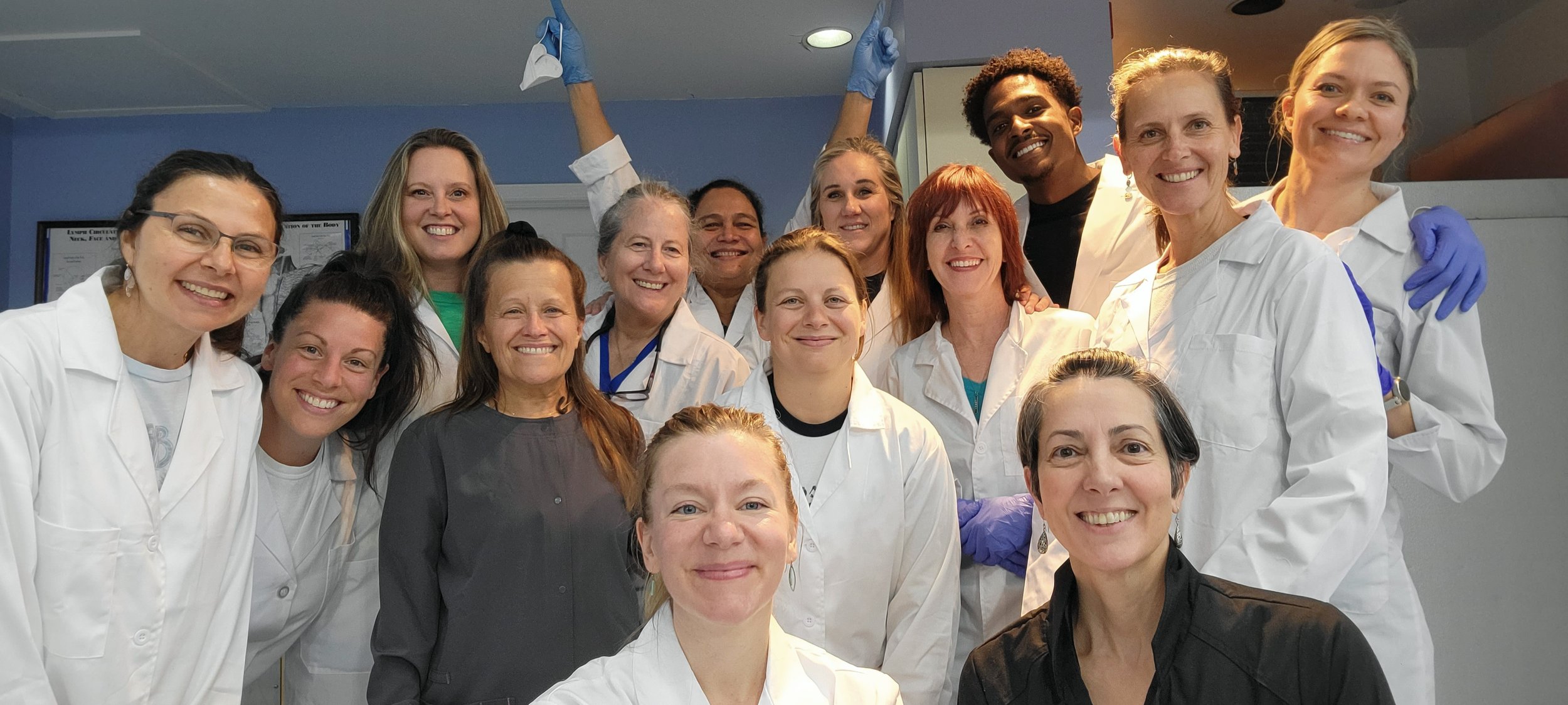We believe knowing yourself - your body’s design and function - is a way to create change and improve day-to-day living. We offer experiences to help you find out what you’re made of.
Dissection Questions & Answers
We hear this all the time from people who are interested in our dissection labs: “I really really want to do it, but I’m scared! What if I can’t do it?” There are a few different variations of the concern, so I took some time to respond to each below.
Here are the three big concerns or questions we hear about doing cadaver dissection:
The elephant in the room: it is a deceased person - that’s intense - am I going to be able to do it?
What if I don’t know enough anatomy? Also, I have no idea how to dissect!
What about the chemical smells?
1: It is a deceased person - that’s intense - am I going to be able to do it?
Firstly, you’re not alone! Most people haven’t spent much time in the presence of a cadaver - it is totally natural to feel a blend of anxiety and uncertainty and anticipation. It would be weird if you weren’t a little bit anxious about it! When I signed up for my first dissection, my fingertips were sweating and my stomach churned with anxiety and excitement. But don’t worry! We have proven processes and practices that we follow to ease you into the experience and support you throughout. While it may initially be confronting, curiosity and wonder quickly take over as you begin to discover the gifts the donor form has to offer.
And along those lines, the donors actively chose to give their body for this type of learning experience. And after they pass, their families grant their wishes by following through with the donation. This experience is a chosen part of their legacy, and we honor and receive that offering with reverence, gratitude, and wonder. It is their wish that we would learn from them through the gift of their form - what a cool gift it is to honor that wish!
And what is that “form”? Through the course of the lab, we discover that the form/cadaver is more like a footprint, an echo or remnant of the life that was lived - it is not the animated life. This distinction becomes very clear as you become more and more comfortable working with the cadaver.
It’s impossible to encounter death without asking some big questions about life. You will learn as much about yourself through this reflective journey as you will about anatomy and human design. We intentionally facilitate an experience that is not just a heady, information-gathering endeavor, but one where you each have space to process and integrate your own inquiries.
Along with awesome anatomical and functional discoveries, you will most likely experience many different waves of emotional experience, and insight, humility, gratitude, and wonder will undoubtedly be a common thread, replacing any trepidation or anxiousness. And we will all be in it together, holding space for each other.
2: What if I don’t know enough anatomy? Also, I have no idea how to dissect!
One of the coolest things about sharing the dissection experience is tapping into the unique expertise, experience, and curiosity of each participant. People come to our labs from all over the country (and world!), and they have varied backgrounds in movement and wellness. We often have a lot of movement educators - Franklin Method, yoga, pilates, fitness, etc - and a lot of manual therapists - massage, structural integration, physical therapy, etc. But we also get acupuncturists, nurses, chiropractors and beyond. Each person brings with them their own unique offering to the group. And despite what our current culture of exalting the “information expert” might suggest, the value you bring to the group is not just what you know!
Yes, it is cool to hear the perspectives on anatomy offered by different people’s educational background. But often what’s more interesting is your particular lens of inquiry. Each person’s approach to exploring and discovering anatomy always offers new insights and ways of seeing to the rest of the group. Your unique perspective and perception offers a new lens to everyone in the group regardless of how many anatomical terms you know. (Maybe read that a couple times and let it soak in - this truth goes beyond the lab!)
Yes, it is very helpful to have some familiarity and frame of reference for the body - that’s why our labs are for folks who work with bodies in some way. And it is fun to see and label the shapes that you’ve learned in school and other trainings. But often the names and the 2-dimensional learning you’ve done can prevent you from seeing what’s really in front of you - the interesting relationships and connections and textures that aren’t at all captured in textbooks. The names and anatomical models taught in school are just one metaphor or story used to understand the form. We encourage a beginner’s mind from the get go and even welcome you to come up with your own names for structures you encounter. After all, the anatomical labels in the textbooks were created by curious people like you who just needed some shared language for discussing their discoveries.
And about the dissection skills - most people come into the lab for the first time with minimal or no dissection experience. We begin with scalpel safety, and teach you techniques and approaches for each different tissue type. Many insights come from the process of interacting with the tissues through dissection as you see how different textures respond differently. We’ll offer strategies to explore different areas and structures, and you’ll be amazed at how your comfort and ability improves in just 6 days. You will not be perfect, neither will we! But luckily the cadavers are the most patient and forgiving teachers, and there are truly no mistakes, just opportunities for discovery.
3: The Smells
I know many people are sensitive to smells, particularly chemical smells so this can be a concern. Well, I have good news!
We work with “unfixed cadavers” meaning they haven’t been treated with embalming fluid. If you did any dissection in high school bio class, it most likely involved frogs that were preserved in formaldehyde, which produces the chemically smell you might associate with dissection. Since our cadavers haven’t been embalmed, there is none of that!
That being said, it doesn’t exactly smell like roses in the lab. There have been many labs held - some with embalmed cadavers and some not, and we are working with tissue such as viscera and intestines, so there are some odors. But the lab is extremely well-maintained, clean, and aired out with fresh mountain air :)
Some people choose to wear a mask and some put essential oils in their mask or a hint of vaporub to cut any odors. But generally we’ve never had the odors, chemical or otherwise, be a problem for participants, even those with prior concerns and sensitivities.
I hope these answers have helped address any concerns! Let us know if there are other questions that make you go “I want to but . . . “
And I’ll be honest, I find when people are asking these questions, they really really want to attend a lab and just need a little nudge and reassurance that these uncertainties will be ok. So I always tell people - if you feel that pull of excitement and anticipation, just do it. You will never regret it :)



